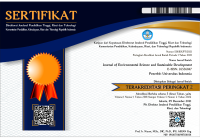Abstract
In many production systems, multiple products are interactively produced. Therefore, an innovative technology that leads to changes in parts of such systems may influence both the unit environmental impacts associated with the products, and the productivity of multiple products. To compare alternative technologies on a common basis, we often account for the avoided or supplemented emissions associated with the residual (i.e. surplus and supplemented) products produced from within the considered system boundary. In this study, using an example of an innovative technology envisioned for use in sugar mills, we first demonstrate how comparisons can be made when the systems vary in product type and quantity. Then, through sensitivity analysis, we highlight how the variations in rationales to trace the avoided emissions influence the assessment results. We identify 1) regional and temporal variance and 2) market response patterns as the items that construct the rationales to account for the avoided or supplemented emissions associated with the compared residual productions. To better assist the comparative technological life cycle assessments (LCAs), it is suggested to elaborate on the latter, by thoroughly describing the factors that may affect the ways in which the market responds to the different quantities of products from the compared systems. The study successfully provides a working example to elaborate on the discussions and arguments made by a recent study on how methodological developments in future LCA studies should be made.
Recommended Citation
Fukushima, Yasuhiro and Ohara, Satoshi
(2018).
ACCOUNTING FOR THE ENVIRONMENTAL IMPACTS ASSOCIATED WITH RESIDUAL PRODUCTS IN A COMPARATIVE LIFE CYCLE ASSESSMENT OF SYSTEMS WITH MULTIPLE PRODUCTS.
Journal of Environmental Science and Sustainable Development, 1(1), 1-11.
Available at: https://doi.org/10.7454/jessd.v1i1.17








